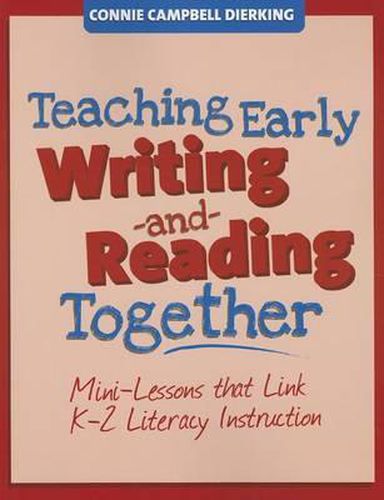Readings Newsletter
Become a Readings Member to make your shopping experience even easier.
Sign in or sign up for free!
You’re not far away from qualifying for FREE standard shipping within Australia
You’ve qualified for FREE standard shipping within Australia
The cart is loading…






The writing/reading connection means more than having your students write under the influence of literature that they have read! Noted author and educator Connie Campbell Dierking shows you how to develop a literacy-connected classroom, including using oral storytelling to scaffold primary reading and writing. She supplies more than 50 mini-lessons–organized by their classroom function–to help you explicitly teach foundational literacy skills during writer’s workshop or whole-class and small-group reading instruction. Dierking encourages you to make the most of the writing/reading connection by thinking about some basic questions when you’re crafting your literacy instruction: How can I connect the conversations in reading and writing workshop? What can I learn about the readers in my classroom through their writing? What can my students learn about reading through writing? How can I teach young writers to support their readers? How can I teach readers how to use a writer’s supports intentionally? Transform your K-2 literacy instruction. Teach writing and reading together.
$9.00 standard shipping within Australia
FREE standard shipping within Australia for orders over $100.00
Express & International shipping calculated at checkout
The writing/reading connection means more than having your students write under the influence of literature that they have read! Noted author and educator Connie Campbell Dierking shows you how to develop a literacy-connected classroom, including using oral storytelling to scaffold primary reading and writing. She supplies more than 50 mini-lessons–organized by their classroom function–to help you explicitly teach foundational literacy skills during writer’s workshop or whole-class and small-group reading instruction. Dierking encourages you to make the most of the writing/reading connection by thinking about some basic questions when you’re crafting your literacy instruction: How can I connect the conversations in reading and writing workshop? What can I learn about the readers in my classroom through their writing? What can my students learn about reading through writing? How can I teach young writers to support their readers? How can I teach readers how to use a writer’s supports intentionally? Transform your K-2 literacy instruction. Teach writing and reading together.